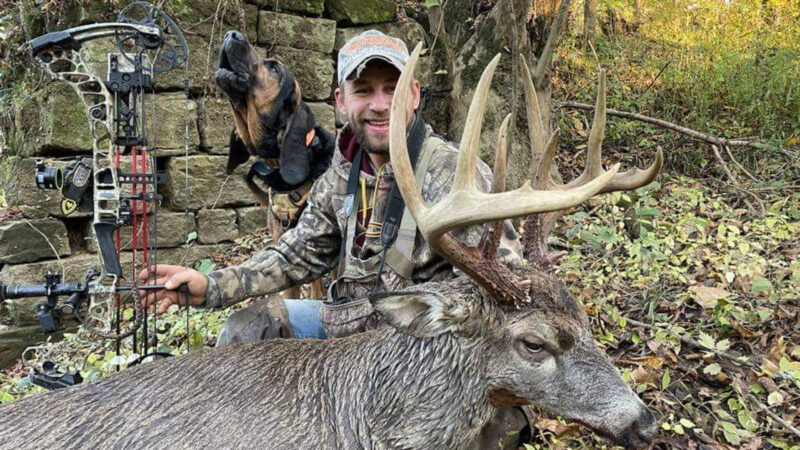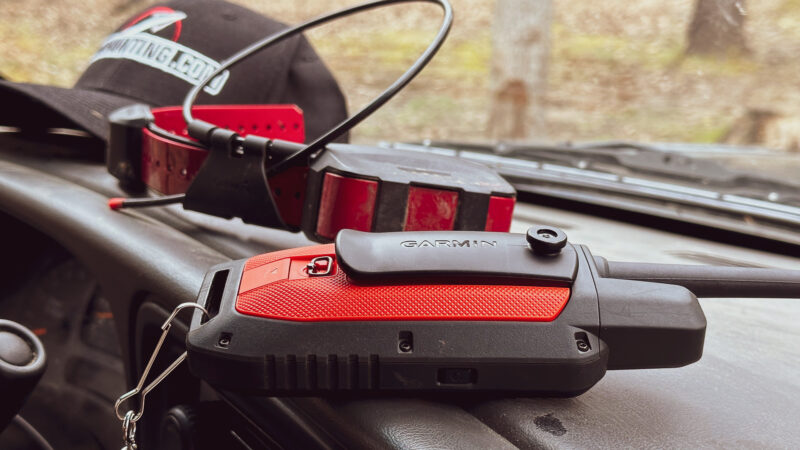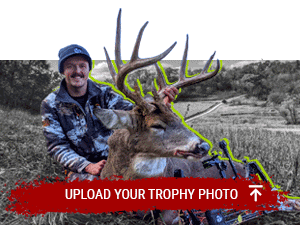The use of deer recovery dogs has been a growing trend in recent years as more and more deer hunters rely on the aid of a hound to help them recover their deer after the shot. And it makes sense, considering a dog’s nose is infinitely stronger than the human nose, they can quickly cover more ground, and they can get in and out of places the hunter won’t go.
But hiring a hound isn’t cheap. You can easily pay $500-$800, or more, plus mileage and gratuities. It all adds up quick. And while a number of hunters are going out and buying a bloodhound specifically for tracking their own deer after the shot, another alternative is to train your current dog to recover deer. Think about it. Adding another dog to the family may not be practical, or affordable. So training your “house dog” to do the dirty work just might be the perfect plan.
Below you’ll find a look at how to train your dog to recover deer after the shot.

Justin Miller is an avid bowhunter, predator hunter, YouTuber, and houndsman that annually helps deer hunters from across the state of Tennessee recover deer after the shot. I reached out to Miller for a look at what he does, what he prefers, and advice on how others can train their dog to recover deer.
Miller got started in the deer recovery game with the use of hounds simply to help his personal family and friends be more successful at recovering deer after the shot. “With lots of friends and family that hunted, I felt it was a need for our personal use,” says Miller. “However, within 2 years we were tracking almost daily throughout season.” Miller quickly developed a reputation as the go-to guy for deer recovery with the use of a hound for many hunters across the state.

“I prefer the blood hounds for their cold nose abilities,” says Miller. “They can readily track at the 40-hour mark, and I’ve seen up to 76 hours for a successful recovery. However, they are a lot more maintenance than many of your midsize breeds. If you want to have a deer recovery dog, and still have a pet, I’d look towards midsize options like the Bavarian Mountain Hound, Blue Lacey, or a Black Mouth Cur.”
Miller says that training your current dog to recover deer after the shot can also be an option to consider. “When it comes to training your dog to recover deer, it’s important to make sure it is well conditioned, not overweight and that it obeys commands well. You don’t need a spoiled, overweight dog in the woods. They’ll typically end up getting hurt or lost.”
- Obedience Training is Crucial -The dog must know the basics. Sit, stay, here, and quiet – these basic commands must be built into your dog before you consider using it for recovering deer. If they can’t handle these, they’ll quickly fail when on the trail of a deer.
- Start Them Young – Get them out there early on in life to get them accustom to the routine. Take them along on the blood trail and get them use to dead deer from an early age.
- Off-Season Scent Training – Give your dog lots of off-season scent training. Start with the use of scent drags with a deer hide. Then advance from there to using deer legs, and eventually the feet.
- Add Advance Skill Training – As time goes by and your dog develops, begin adding complicated training routines to the mix to advance their knowledge and make them keep searching. They need to know how to track across pavement, creeks, and through other animal scents. The key is a continual increase in their skill building so they’re ready to handle anything. If you’ll minimize the surprises for your dog, you’ll maximize its success.
- Keep it Fun – Don’t push it too hard early on. When they begin to lose interest, try something else. Keep it fun for them and come back to it later if they begin to lose focus. Much like a child, you want your dog to enjoy and look forward to the task at hand. Keep this in mind when training, and don’t push it.

One of the greatest tools for the teaching, training, and tracking process of your dog is a training/tracking collar. No other tool allows you to correct your dog’s behavior, as well as track its whereabouts when in the woods, like this tracking tool.
The Garmin Alpha 200 is the standard here with a variety of tools and features to keep you confident in knowing where your dog is at any time, as well as the ability to bring it back to you when the need arises. Even better, the new Alpha 200i unit includes Garmin’s inReach technology so you’ll have the confidence you’re always connected should an emergency arise, even when cellular signal is not available.
What about you? Have you tried using your dog for recovering deer? What dog breed have you tried? What were the biggest struggles you found in using your house dog to recover deer?
Comment below and let us know.

 By
By 



